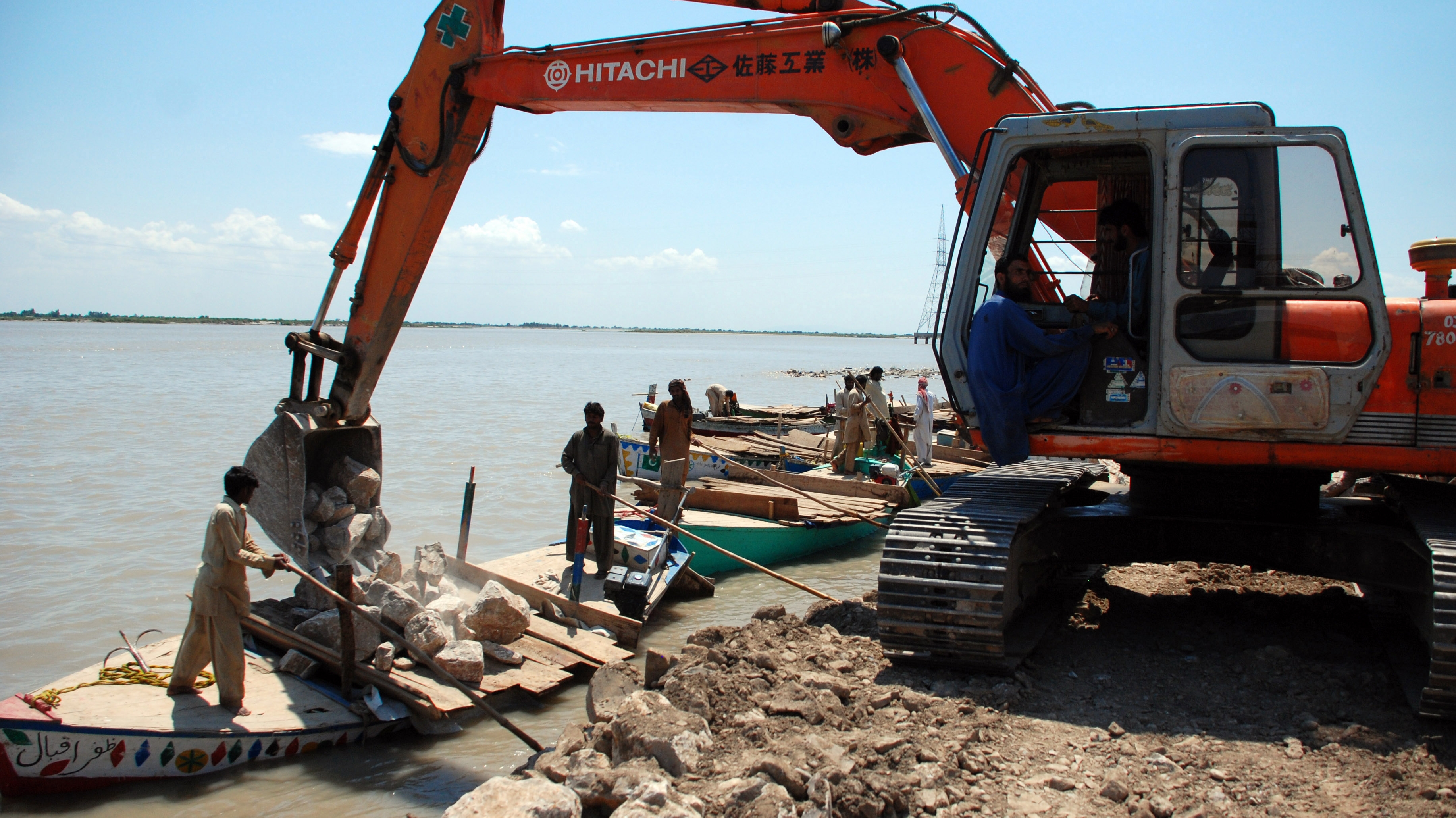Learning from past lessons
In fact, barrage officials at Jinnah are making a conscious effort to learn from past projects, says Arif.
“Here at Jinnah, we have done a lot of advance consultations with people, discussed everything, and got all their feedback,” says Arif. “We have used all our past experiences, so we hope people here will be happy.”
To accomplish this, barrage officials partnered with local non-government groups, like the Punjab Rural Support Program (PRSP), to help with public awareness.
“I think people here appreciate that barrage officials are thinking about them, helping the poor farmers and considering everyone’s needs,” says PRSP district manager Mohammad Iqbal.
Although irrigation water interruptions aren’t expected after rehabilitation work starts, extra effort is being made to encourage farmers to sow their crops early. To this end, PRSP officials are helping run awareness campaigns and giving free high-yield wheat seeds to farmers with small plots of five acres or less.
Standing close to a nearby canal, one farmer said the plan was appreciated. “This is a good idea, and it’s very nice wheat seed that gives good quality,” says Aziz Khan. “We will work hard for this.”
“We also know water pressure will be better, reaching farmers at the tail end with barrage modernization, because it is really old and not so good now,” adds another farmer, also named Mohammad Iqbal.
“We understand that our people will get more construction employment, our children will get the schools and hospital. So we are praying that it should all be completed very soon,” says farmer Iqbal with obvious enthusiasm.
Earning community support
At present, about 80 children in the nearby canal community go to primary school in a derelict building as old as the barrage. Only two rooms still have a roof and walls.
“It’s very hard to see our children in these very dilapidated conditions,” says teacher Tahira Batool. “That’s why we have few students here, because parents refuse to send them to us.”
Construction of two schools, two mosques, a public park, basic health unit, along with provision of natural gas and telephone lines for the canal community is part of the project. Public improvements are being completed first, before rehabilitation and modernization of barrage begins, to help ensure community support, says Arif.
“We are grateful and know our coming generations will get the benefit from these works,” says Mohbat Khan, a laborer at the barrage. “We know if something is done well, it will give benefits to everyone.”
Aziz Nawaz, a laborer supervisor, points out: “There is huge unemployment in this area, so the jobs this creates will be a big help to us.”
Some work at the barrage has already started. Standing on the deck of a battered wooden boat, Mohammed Rafiq Sheikh says he is earning about 2,200 rupees ($23) daily, dumping massive boulders in front of the barrage structure.
During the 2010 floods, as much as 15 times more water than usual surged through the barrage, and eroded the ground below. Now boulders are building it up again.
“We are very pleased and happy with this work,” says Sheikh.
Back upstream, the Jinnah project is also tackling another British legacy. The Kalabagh iron bridge, built in 1870, has gaping holes in wood planks covering its surface. Only locals still dare to cross it.
Again, hoping to bolster community goodwill, the barrage project plans to put fresh concrete slabs on the bridge to make it passable again, says Arif. “We truly hope that we are increasing the life of this bridge and the barrage by at least another 100 years.”

